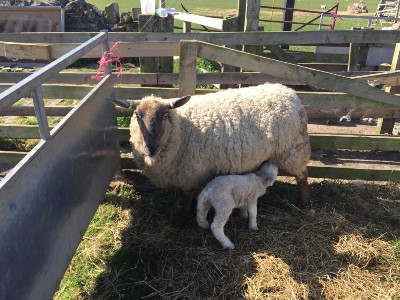Choosing the Best Quality Colostrum Replacer
8 February 2023Colostrum is always a key part of any sheep farms lambing supplies list. Lambs are born having had no antibodies passed from the ewes placenta meaning they have no protection from pathogens at birth. For this reason, lambs are entirely reliant on the passive immunity of antibodies through the first milk of the ewe (colostrum). The best source of colostrum to give the greatest level of passive immunity from immunoglobulins (IgG) will always be from the ewe with Kirsten Williams highlighting best practice for using ewes colostrum in the earlier article FAS – Colostrum Management for Lambs. This article also highlights the importance of ensuring lambs are provided with 50ml/kg liveweight in the first few hours and should have had 200ml/kg liveweight within the first 24hrs. It is also important to remember that IgG content in ewe colostrum rapidly declines post birth making it essential that lambs suckle, or colostrum is collected from a ewe as early as possible.
When collecting colostrum from the ewe or from a banked source of ewes colostrum is not possible many sheep farmers may turn to powdered colostrum products as a last resort. But with a vast number of products available and high variability between products it can make choosing a colostrum replacer a difficult task. Ewes colostrum typically contains antibodies of around 50g IgG/L with a high fat percentage essential for keeping lambs warm. For a colostrum replacer to be effective it must be as close as possible to the real thing. Ideally, a replacer should provide a high levels of IgG per feed >30g IgG/L and also contain between 15-22% fat. Many replacers on the market however contain high levels of whey protein rather than colostrum. Although whey based milk replacers can be a good nutritional replacements when lambs move over to milk they do not contain the high levels of IgG and fat contained in colostrum.
Tips for choosing a good quality colostrum replacer (if ewe colostrum is unavailable)
- Look at the labels – the first ingredient on the list should always be colostrum.
- Choose a replacer with high levels of IgG ideally >30g/L.
- Pick a colostrum with fat between 15-22%.
- Ensure colostrum powder is mixed to guidelines weighing both colostrum and water carefully.
Further tips on colostrum
- Colostrum should be heated to no more that 40°C anything above this will denature protein.
- NEVER heat colostrum (or milk) for livestock in the microwave.
- 50ml/kg liveweight in the first few hours and 200ml/kg liveweight in 24hrs post birth.
- Nothing beats the real thing – use colostrum from a ewe wherever possible.
Related FAS Materials
Lorna Shaw
lorna.shaw@sac.co.uk
Sign up to the FAS newsletter
Receive updates on news, events and publications from Scotland’s Farm Advisory Service











